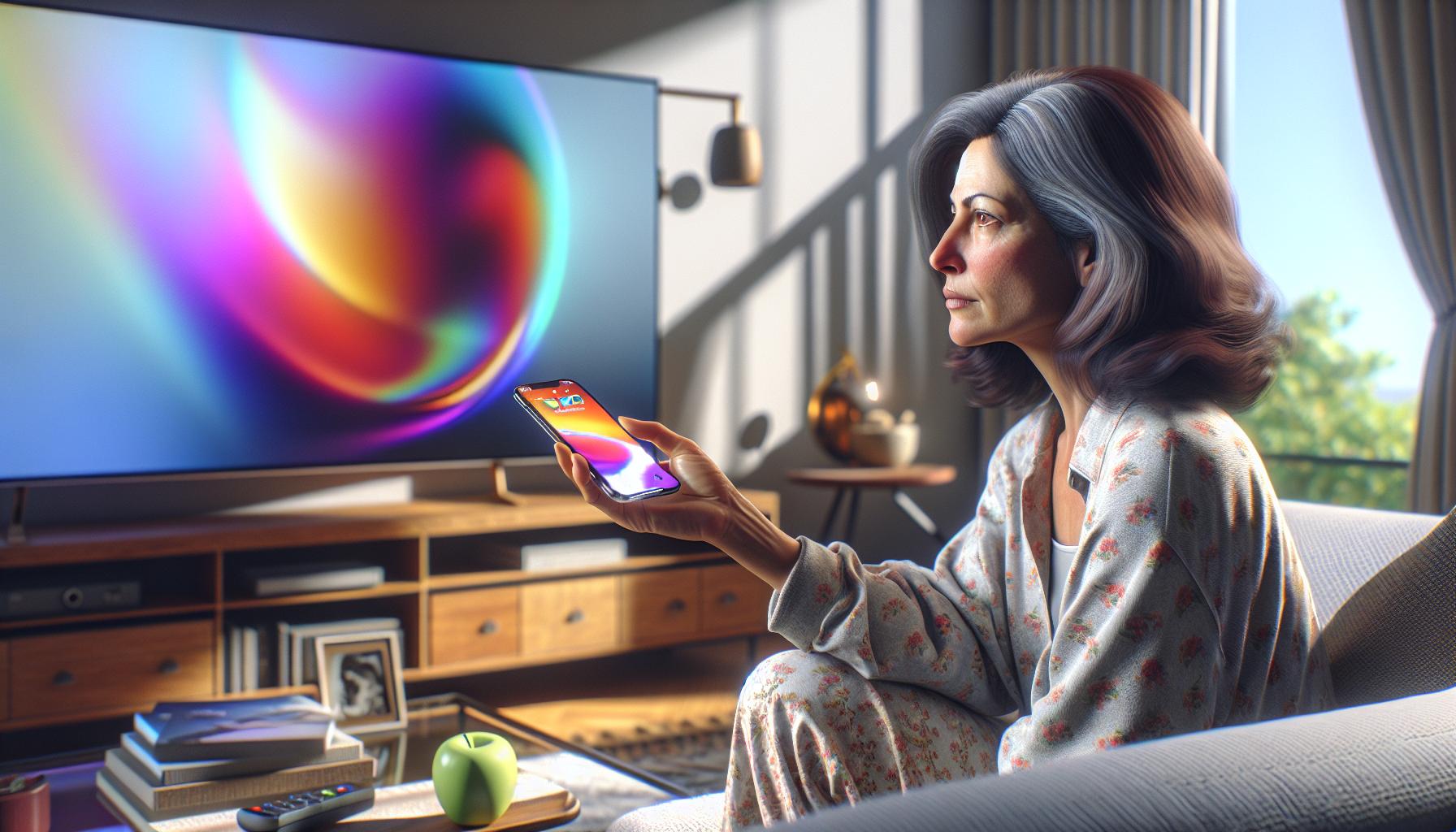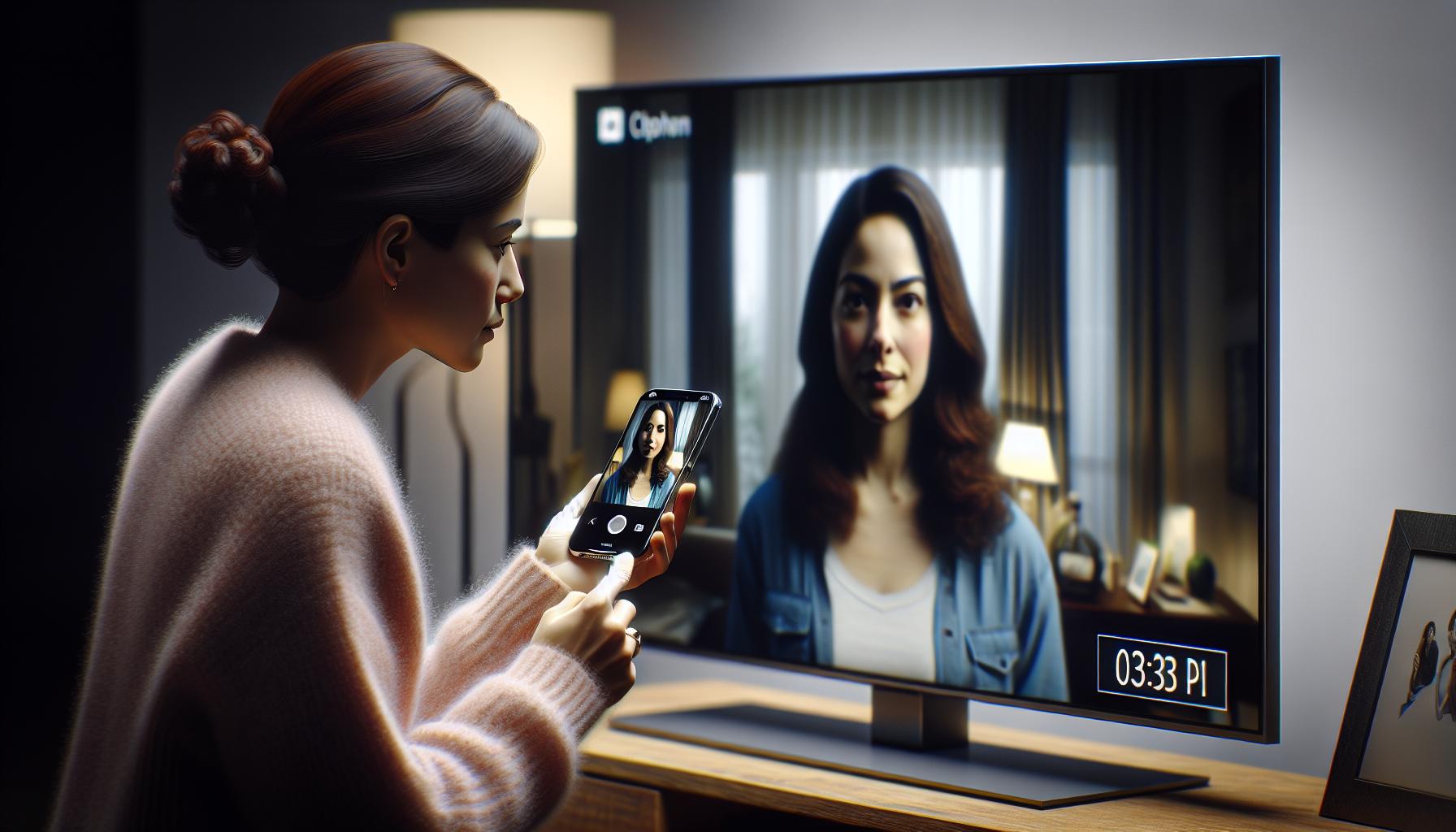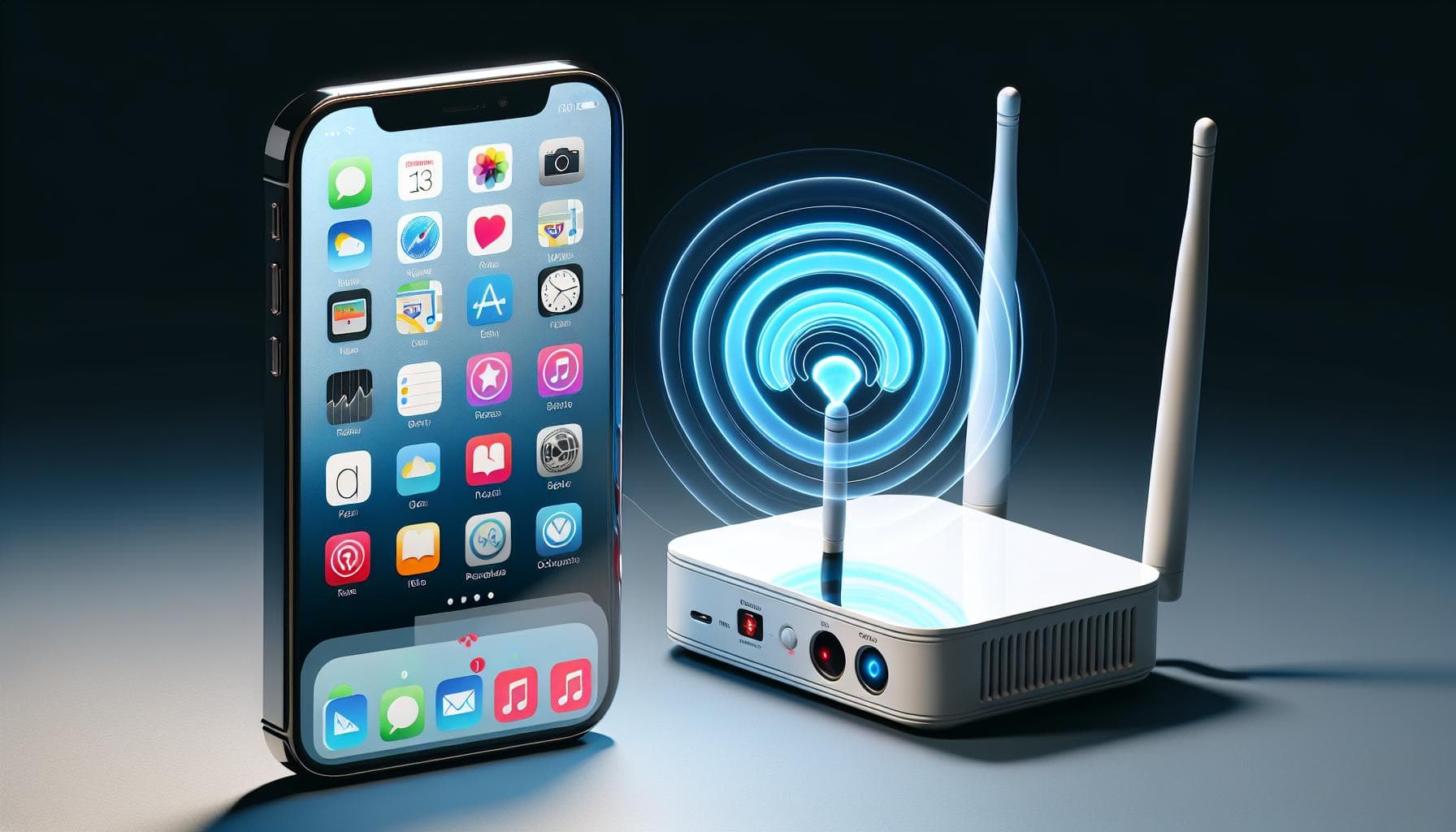Ever wished you could see your iPhone's display on a bigger screen? Well, you're in luck. It's completely possible to mirror your iPhone to your TV, and it's easier than you might think.
Whether you want to share photos, play games, or watch your favorite shows, this guide will walk you through the process. So, grab your iPhone, sit back, and let's get started.
No need to be a tech wizard to pull this off. With a few simple steps, you'll be watching your iPhone content on your TV in no time. Stay tuned to learn how.
Reasons to Mirror iPhone to TV
Streaming your favorite shows and movies directly from your iPhone to your TV can truly enhance your viewing experience. You have got to admit, it's more enjoyable watching on a bigger screen. It provides an opportunity to savor the visuals in high resolution.
Mirroring your iPhone display can also prove useful during business presentations and meetings. By connecting your iPhone to a larger screen, you can effectively display slides or charts and let everyone in the room view it. So, for your next board meeting or team brainstorming session, get your iPhone, and hook it up to the TV.
Are you an avid gamer? Then there's good news for you. You can mirror your iPhone screen while playing games. It provides a more immersive gaming experience on a much larger platform. Wave goodbye to straining your eyes on your small iPhone screen.
Let's not forget about sharing photos with friends and family. Why squint at your phone screen when you can gather around a TV and relive memories together? It's a much more engaging and social experience.
Finally, here is a fun and practical scenario. Picture yourself trying out a new fitness app or a cooking recipe. Instead of constantly reaching out to pause or view instructions on your relatively small iPhone screen, how about streaming it on your TV? Cool, right?
Yet, these are just a few ways mirroring your iPhone to your TV can enhance experiences and make things easier. As you explore this functionality, you'll discover numerous uses and potential applications. Go ahead, give your iPhone screen a big facelift on your TV and enjoy the unlimited possibilities.
Understanding the Requirements

Before you can start mirroring your iPhone to your TV, it's vital to understand the essential requirements. Getting the right gear, knowing your set limitations, and some tech knowledge is key for a slick setup.
First and foremost, you need a compatible device. An iPhone 4s or later can make the magic happen. Any earlier than this, it might be time to consider an upgrade – or look into different methods. It's all about staying future-proof, so consider your decision wisely.
Regardless of your iPhone version, iOS 7 or later is a must. This is the operating system that runs on your device and can be updated within the phone's settings. Routinely keeping your system updated guarantees you’ll always enjoy the newest features and highest compatibility.
For the TV side of things, that varies. Are you eyeing up an Apple TV device, or does your TV support Airplay 2? Either will work, but remember to keep your software up to date.
| Compatibility | Device |
|---|---|
| iPhone 4s or later | iPhone |
| iOS 7 or later | Operating system |
| Apple TV or AirPlay 2 | TV |
Beyond devices and software, your internet connection is equally crucial. A stable, high-speed internet connection ensures that streaming from iPhone to your TV is smooth, with minimal buffering or lag. Think alongside the lines of at least 5 Mbps for HD quality. An optimal scenario would be wired connections, ensuring maximum speed and stability.
Armed with all of the right equipment, you should be ready to go. But it's also important to know how these devices communicate. You'll need to keep your iPhone and TV on the same Wi-Fi network for successful mirroring. Otherwise, you might encounter some hiccups.
In the end, mirroring your iPhone to your TV isn't just about owning the right devices. It's about understanding the connection between these devices and knowing how to utilize this technology effectively. Knowledge is power, so equip yourself well. By understanding these requirements, you're setting yourself up for a dramatic viewing experience. Connect, stream, and uncover new perspectives. Enjoy your iPhone's capabilities like never before. The journey is just beginning.
Connecting Your iPhone to Your TV
After ensuring you've got all the essentials covered, the next step is Connecting Your iPhone to Your TV. With the right devices and software, you'll find this process to be a breeze.
First, let's talk about using Apple TV to mirror your iPhone. Ensure your iPhone is on the same Wi-Fi network as the Apple TV device. Swipe down from the top right corner of your iPhone's screen to access the Control Center. Here, tap on 'Screen Mirroring' and select your Apple TV from the list of available devices. Just like that, your iPhone screen should now appear on your TV.
Say you don't have an Apple TV, but a TV that supports AirPlay 2. No worries, the process is almost identical. Make sure your iPhone and AirPlay 2 TV are both connected to the same Wi-Fi network. Access the Control Center on your iPhone, tap 'Screen Mirroring', and select your AirPlay 2 compatible TV.
Perhaps though, you are dealing with a TV that neither supports AirPlay 2 nor do you have an Apple TV. In these cases, Lightning Digital AV Adaptor could save the day. Plug the HDMI end of your adaptor into your TV. Connect the other end to your iPhone. Ensure your TV is set to the correct input and there you have it - your iPhone mirrored on your TV.
Remember, whatever method you're using, a stable, high-speed internet connection is crucial for a smooth, lag-free experience. Frequent disconnections or a grainy picture usually hint at a poor Wi-Fi signal strength. It's essential to troubleshoot any potential network issues for the best viewing experience.
We've covered one the most fundamental steps, but there's still more to know. Mirroring an iPhone to a TV may have its nuances, but with the right guidance, you'll navigate it with ease. Be on the lookout for our next section in this series, where we'll dive deeper into the potential stumbling blocks you might encounter and how to overcome them.
Wireless Options for Mirroring iPhone to TV
This journey of connecting your iPhone to a TV continues by delving into wireless alternatives. Technology's been kind, providing a range of convenient wireless options that underscore the "less wire, less mess" mantra.
Apple TV and AirPlay
Your primary wireless solutions are Apple TV and AirPlay 2-supported TVs. These devices are built to effortlessly sync with your iPhone. Simply swipe up (or down, depending upon your iPhone model) to access the Control Center, click Screen Mirroring, and select your TV. Ensure your iPhone and TV are on the same Wi-Fi network for seamless connectivity.
Lightning Digital AV Adaptor
For those that use a TV not compatible with AirPlay 2 or without Apple TV, never fear! The Lightning Digital AV Adaptor confidently steps up. Connect it to your iPhone and TV via an HDMI cable, iron out the small details in Settings, and voila! Your iPhone screen stares back at you from your TV.
Remember the Wi-Fi
Regardless of the path you choose, at the core sits a stable, high-speed internet connection. It's likely irrelevant whether you possess the latest tech if your Wi-Fi struggles. Troubleshooting network issues is vital to your mirroring success.
We've only scratched the surface of mirroring your iPhone to a TV. It's true. More intricate complexities lie ahead, full of potential stumbling blocks. As we proceed though, we'll arm you with knowledge to swiftly conquer any obstacle.
Troubleshooting Tips for iPhone to TV Mirroring

Even with the best setup for mirroring an iPhone to a TV, issues can arise. Let's dive into some common problems and their solutions.
Connectivity Issues Between iPhone and TV
First and foremost, it's crucial to have a stable, high-speed internet connection. If your iPhone and TV are both connected to the same network but still having issues, try the following steps:
- Reset your router for a fresh connection.
- Move closer to your router to strengthen the signal.
- Disconnect and reconnect both devices.
iPhone Screen Does Not Appear on the TV
In this case, be sure to check if your TV supports AirPlay 2. If not, you may need to connect using a Lightning Digital AV Adaptor. Also, check your phone and TV's settings to ensure that screen mirroring is not disabled.
Video Streams but There's No Audio
Your TV volume might be set too low, or the iPhone could be muted. Adjust the volume settings on both devices. If this doesn't work, ensure that you've chosen the correct audio output option on your iPhone
Poor Image Quality on the TV Screen
Poor image quality may be due to a slow internet connection or interference from other devices. To improve this:
- Upgrade your internet speed.
- Keep other devices to a minimum when mirroring your iPhone.
Remember, each issue has an array of potential solutions. Trust your instincts and use these tips as a guide. Troubleshooting takes time and patience, but with persistence, you'll ensure a smooth mirroring experience. Next, let's explore additional tools and applications to maximize your iPhone to TV mirroring experience.
Note: Not all TVs and iPhones are the same. Solutions may vary based on the specific models and software versions.
Conclusion
You've got the knowledge now to mirror your iPhone to your TV like a pro. Remember, a fast and stable internet connection is key. Don't fret if you hit a snag, there's always a solution to common issues like missing audio or a no-show screen. Adjust your settings, check out AirPlay 2 compatibility, and consider an internet speed upgrade if needed. You're not just limited to the basics, though. There's a whole world of tools and apps waiting to enhance your mirroring experience. So go ahead, get your iPhone and TV talking to each other and enjoy your favorite content on the big screen. You've got this!
Frequently Asked Questions
What's the importance of a stable, high-speed internet connection for mirroring an iPhone to a TV?
A stable, high-speed internet connection is essential for mirroring an iPhone to a TV. It ensures seamless connectivity, improves video streaming quality, and prevents lagging issues.
How can I resolve connectivity issues between my iPhone and TV?
You can try troubleshooting steps like restarting devices, checking network connections, and verifying if both devices are on the same Wi-Fi network. Compatibility with AirPlay 2 and settings adjustments are also worth checking.
What can I do if my iPhone screen is not appearing on the TV?
If your iPhone screen doesn't appear on the TV, adjusting your settings is the first step. If that doesn't work, make sure your devices are compatible with AirPlay 2.
Why does the video stream without audio?
Streaming video without audio usually results from incorrect audio settings on either your iPhone or the TV. Check and correct these settings.
What can be done to improve poor image quality on the TV screen?
Poor image quality can often be improved by upgrading your internet speed, adjusting the TV's display settings, or using high-quality cables and equipment.
What solutions can improve the iPhone to TV mirroring experience?
The article provides additional tools and applications suggestions that can help maximize the iPhone to TV mirroring experience. It also recommends ongoing troubleshooting to address recurring issues.




